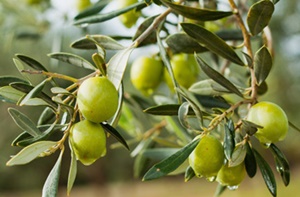Gestion de la pollinisation de la variété "Meski" d’olive de table tunisienne auto-incompatible (Olea europaea. L)
Résumé
La pollinisation croisée de la variété d’olive auto-incompatible Meski (Tunisie) a été réalisée par l’interplantation de la variété Picholine (France) dans un champ irrigué dans la zone centrale et continentale de Sidi Bouzid avec une densité de 204 arbres ha-1 (7 m / 7 m). La production d’olives moyenne a été calculée pour chaque arbre Meski sur la période 2006 à 2015. Les arbres ont été regroupés en fonction de la distance minimale par rapport au premier arbre pollinisateur et le nombre de polinisateurs dans les trois premières carrés autour de l’arbre Meski. Les relations de régression entre la production d’olives Meski et sa distance du pollinisateur Picholine d’une part, et entre la production d’olive Meski et le nombre de pollinisateurs Picholine d’autre part, étaient toutes non significatives. Ainsi, le premier arbre pollinisateur pourrait être placé dans le second carré (14 m). Le nombre de pollinisateurs pourrait être 0 dans le premier carré autour de Meski, 1 dans le deuxième carré et 3 dans le troisième carré. Au total, les trois premiers carrés devraient totaliser un maximum de 4 arbres pollinisateurs. Les résultats ont montré une production optimale d’olive avec 8 % des polinisateurs dans les plantations Meski. Ainsi, la faible performance productive de Meski n’est pas seulement due à la faible autopollinisation mais d’autres facteurs seraient également impliqués.
Mots clés: Olive, variété Meski, Pollinisation, Tunisie
Téléchargements

Publié-e
Comment citer
Numéro
Rubrique
Licence

Revue Marocaine des Sciences Agronomiques et Vétérinaires est mis à disposition selon les termes de la licence Creative Commons Attribution - Pas d’Utilisation Commerciale - Partage dans les Mêmes Conditions 4.0 International.
Fondé(e) sur une œuvre à www.agrimaroc.org.
Les autorisations au-delà du champ de cette licence peuvent être obtenues à www.agrimaroc.org.

